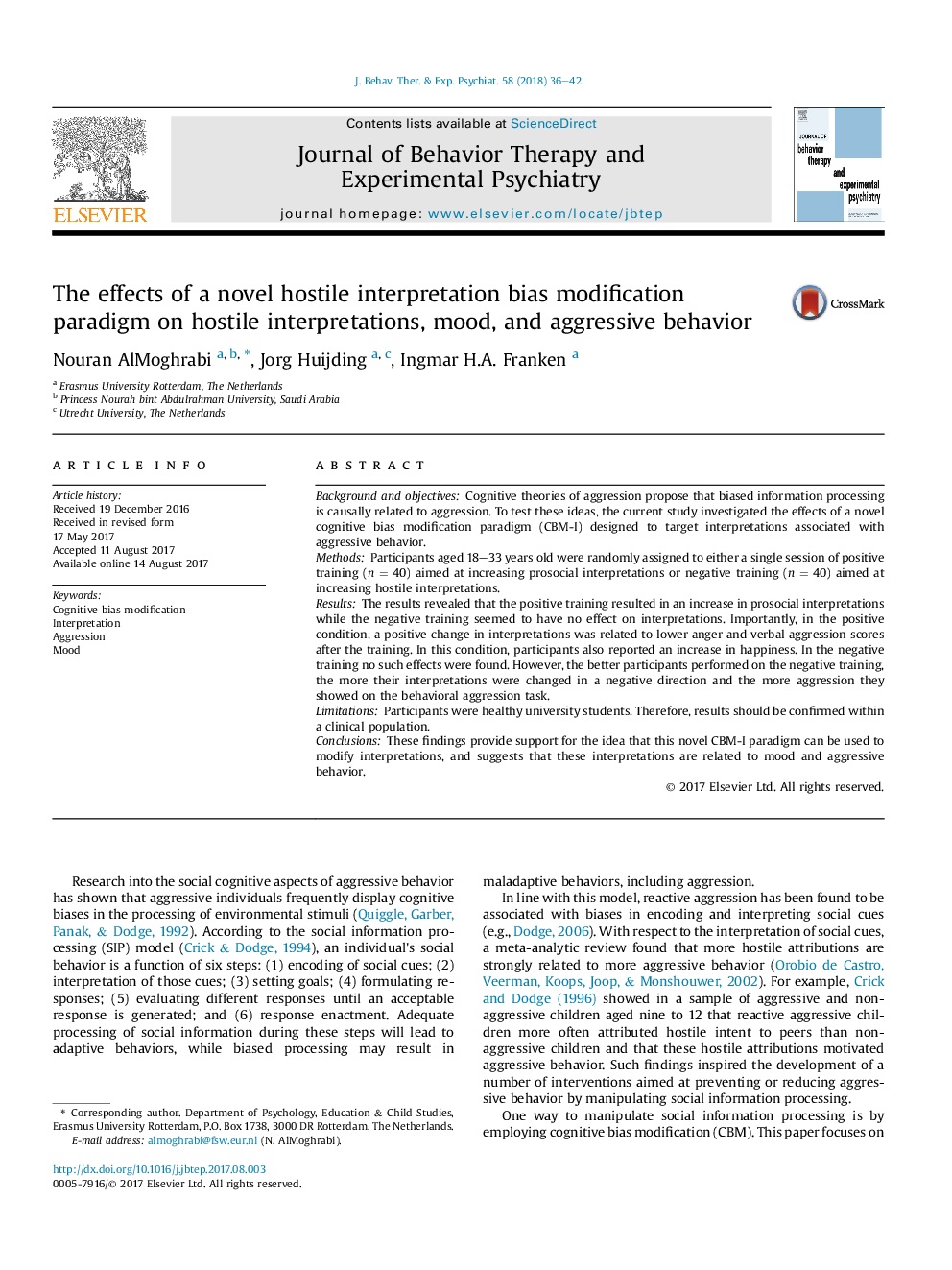| کد مقاله | کد نشریه | سال انتشار | مقاله انگلیسی | نسخه تمام متن |
|---|---|---|---|---|
| 5038965 | 1473058 | 2018 | 7 صفحه PDF | دانلود رایگان |
- Positive CBM-I resulted an increase in prosocial interpretations.
- Positive CBM-I resulted less anger and aggression and more happiness.
- Better performance on the negative CBM-I, resulted changes on interpretations.
- Better performance on the negative CBM-I, lead to more aggressiveness on the TAP.
Background and objectivesCognitive theories of aggression propose that biased information processing is causally related to aggression. To test these ideas, the current study investigated the effects of a novel cognitive bias modification paradigm (CBM-I) designed to target interpretations associated with aggressive behavior.MethodsParticipants aged 18-33 years old were randomly assigned to either a single session of positive training (n = 40) aimed at increasing prosocial interpretations or negative training (n = 40) aimed at increasing hostile interpretations.ResultsThe results revealed that the positive training resulted in an increase in prosocial interpretations while the negative training seemed to have no effect on interpretations. Importantly, in the positive condition, a positive change in interpretations was related to lower anger and verbal aggression scores after the training. In this condition, participants also reported an increase in happiness. In the negative training no such effects were found. However, the better participants performed on the negative training, the more their interpretations were changed in a negative direction and the more aggression they showed on the behavioral aggression task.LimitationsParticipants were healthy university students. Therefore, results should be confirmed within a clinical population.ConclusionsThese findings provide support for the idea that this novel CBM-I paradigm can be used to modify interpretations, and suggests that these interpretations are related to mood and aggressive behavior.
Journal: Journal of Behavior Therapy and Experimental Psychiatry - Volume 58, March 2018, Pages 36-42
